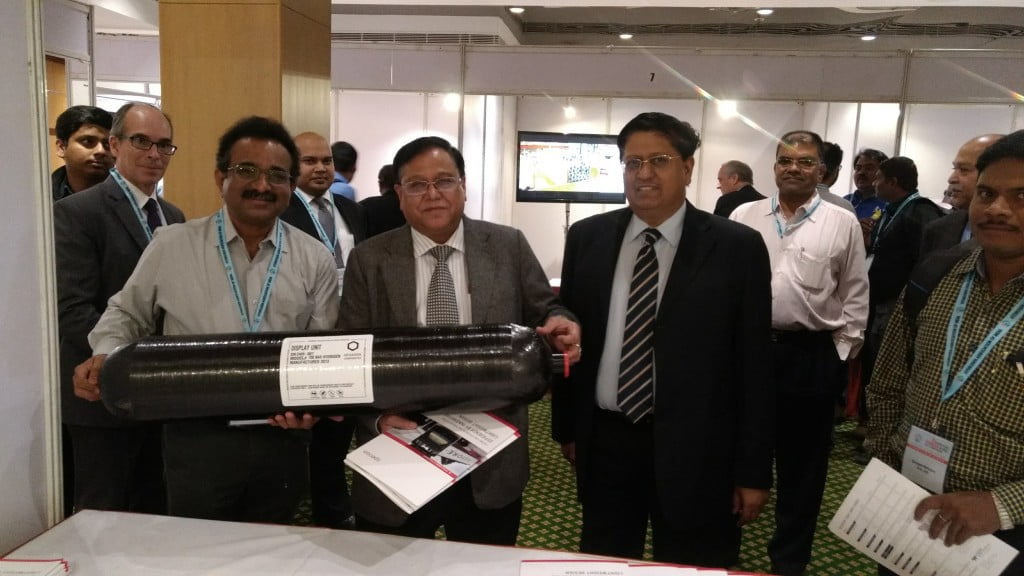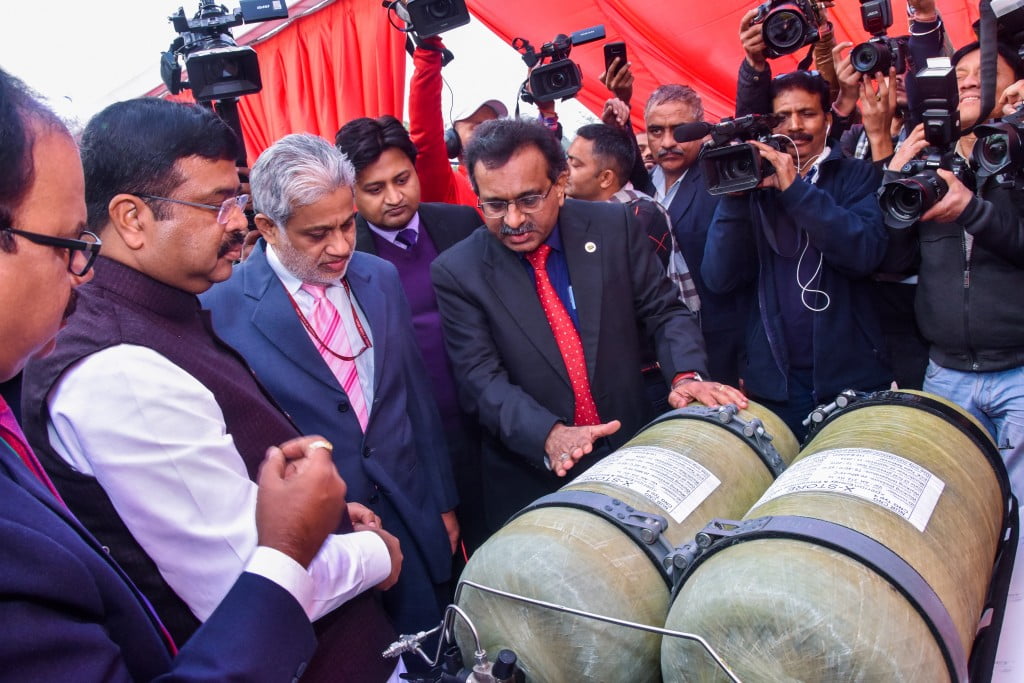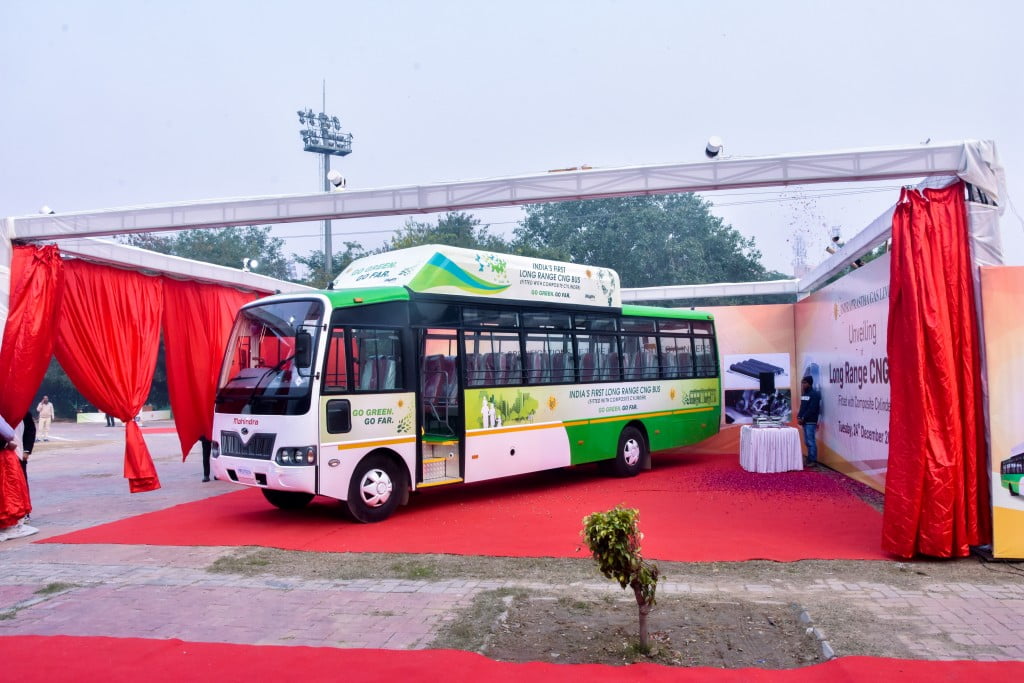What is the potential for Agility Fuel Solutions which has been selling clean fuel products to global automotive manufacturers like Daimler, Volvo, Scania, and MAN, in some 45 countries–as well as dreams, priorities and key result areas in the Indian Automobile market?

This is a tough question to answer. We are just starting our journey in India, so our vision and success depend on the changes in the Indian transport industry. Agility has done seminal work in the field of clean energy– be it CNG, LNG, Hydrogen, Electric or Hybrids – and can offer specific solutions that suit the customer, vehicle model, application or market. In a study to predict the future fuel options in the global transport industry, we have found that customers look at Capital cost, Operating cost, Range and Performance before making a purchase decision. As long as it meets the emission standards set by a country, a buyer will not be looking at cleaning the environment per se.
The clean energy fuel options today include Electric, CNG, CBG, Hydrogen, and Hybrids. Each of these fuels has some negative effects on the environment. Biogas, generated by converting urban/agricultural waste into gas is the ONLY option that has a POSITIVE impact and cleans up the environment. Another issue worth considering is that the total level of pollution from commercial transport is almost equal to that of cars – even though the population of cars is 60 times higher. Our study has shown that a Hydrogen fuel cell vehicle is ideally suitable for a distance less than 200 km but when we need to cover a range beyond 200 – 1100 km the CNG Electric hybrid becomes the most efficient fuel option. Hence we believe that one or more of these clean energy option holds the key for the future but it remains to be seen how the Indian market evolves.
We would like to offer a wide spectrum of technology options for new vehicle designs, engineering, supplies, assembly, and aftermarket for both OEMs and fleet owners, as well as a 360 Degree solution for conversion of existing vehicles in the market along with our strategic partner Advantek. Right now CNG is our priority but we are also working on LNG and other options. Even if 10% of new vehicles produced run on CNG we will need multiple plants in India to meet the requirement.
The Indian government is proactively pursuing a clean energy policy. We see India developing as one of our largest markets in the years to come. We would like the golden quadrilateral to be converted into a green corridor at the earliest and the government to ensure that the entire Indian transport system – cars, buses, and trucks run on clean energy. We would like to contribute our bit to create such a clean energy ecosystem.
Whenever someone comes up with a new idea or tries to introduce a new concept or new technology, invariably there is some resistance as well as deliberate or unintended hurdles – what has been your experience?
This is a rather sensitive question. Our technology has been accepted by all stakeholders — from OEMs to fleet owners and statutory agencies to gas companies including the ministry. However there are a number of changes taking place– too many and too fast– in the Indian transport sector. These include the BSVI, electric, LNG and CNG initiatives not just in terms of technology but also infrastructure, push and demands from each segment of the industry. The OEMs and fleet owners are still uncertain about the future – each with their own priorities and challenges. It is also a question of limited funds and too many targets. Apart from these there are the laws, and taxation. The biggest problem is that this is like a chicken, egg and cook situation – between the OEM, fleet owner and infrastructure. In our case there is a lot of confusion because the technology and product are not even mentioned in any user manual and hence ends up attracting the highest level of taxes and duties. This is making it an all the more challenging task for us. However, I must, compliment the Ministry of petroleum, Ministry of transport and Niti Aayog for removing the hurdles in our path. On the whole, I think we are going through growing up pangs which are both inadvertent and understandable.

You have been trying to bring in the technology for long-range CNG cylinders for the first time in the Indian market. This is what the industry and users need but still why is it taking such long for you to implement the new technology?
I think our entry coincided with the move towards BSVI coupled with the policy push towards electric mobility. There definitely is certain nervousness about investments in electric, or CNG without losing out on existing diesel models. I expect things to get resolved over the next two years when the industry will resolve the commercial and technical issues related to BSVI and better clarity will emerge for everybody.
Don’t you think that – the time you are taking to introduce this technology, some other competitor might actually leap in and reap the crop from the efforts put in by Agility? Or is it that you have been assured of certain first-mover advantage by the Government of India?
In spite of being the first and the fact that we have put in almost 10 years to promote and push the technology, nobody has given us any assurance or first-mover advantage but never the less we have gained tremendously in terms of goodwill and hope that it will support us in the days to come. Today composite has become synonymous with Agility in the automotive segment. Agility can take pride in the fact that we are the first in India and pioneer who created this opportunity. However, my biggest fear is that this technology has a lot of safety issues and international standards which need to be followed. Tomorrow some other player may compromise on safety and try to offer something cheaper. Though I am confident that, such strategy will not work, it will complicate things for the industry.
Despite your best efforts to push the technology for long-range CNG cylinders – you have managed to procure orders for only 5 buses from IGL and Uttarakhand Transport Corporation. Is it a viable number to sustain your business prospects in the Indian market? Why are DTC and other State Transport Corporations taking so long to ply CNG buses on their long haul or Inter-city routes?
I can assure you that every OEM, fleet owner, and infra is very actively considering to use long-range CNG cylinders and the delay, if any is more due to the fact that everybody is focusing on BSVI right now and like I said earlier a certain apprehension about investing in electric or CNG. Secondly, when you talk of long haul routes global companies are guided by their global strategies even in India. Finally, while we have been saying that CNG can be used to cover long distances from 1500 -2000 km there is a popular belief that long distance can only be achieved by LNG. When we talk of an either or choice between LNG and CNG — the only difference is the storage system and there is a need for a particular fuel based design and performance of a specific vehicle. Fleet owners today are aware of the benefits and many are taking steps in this regard. All this will translate into clarity, focus and action in about two years’ time.
Agility Fuel Solutions has partnered with Advantek Fuel Systems to make inroads in the Indian market and transform the dream for eco-friendly, long-distance travel in the country into reality. What kind of synergy can we expect from this strategic partnership in the near future?
One of the ingredients for success in this segment is aftermarket support –specifically periodic certification and testing of composite cylinders. Advantek already has the required infrastructure and would help us roll out this support. Advantek also has strategic partnerships with global companies that supply sub-components. This we expect will benefit us in the Indian market as well.
What is the role that each of the stakeholders like Agility Fuel Solutions, Advantek Fuel Systems, Indraprastha Gas Limited, Mahindra & Mahindra, and MG Auto played to introduce long-range CNG buses for the first time in the Indian market? Can we expect to see more positive results from this initiative and collaboration?
Mahindra provided the chassis, Agility provided the technology, Advantek supplied the sub-components and took care of the local engineering, assembly and documentation while MG Auto did the bodybuilding. Our target now is to create more such initiatives in the market. We would like customers to come to Agility as a one-stop-solution provider to co-ordinate the whole process with all the stakeholders in the supply chain and give him clean energy bus or truck. Agility is probably the first and currently the only company in India that is in a position to design and deliver a whole gamut of clean energy solutions in a professional manner. We want to convert this into long term strategic partnerships with OEM’s and fleet owners.
What is the justification for the end-users both in the commercial or personal vehicle segment to convert to type IV composite cylinders instead of the conventional type I steel Cylinders? How long would it take for them to recover their cost in the long run?
The biggest advantage of composite cylinders is a 70% reduction in weight, zero corrosion and rusting, highest levels of safety even in a fire. The cost of a new vehicle designed with composite cylinders is not likely to be very different from the existing cost with steel cylinders. At best there could be a marginal cost. However, when you try to retrofit a composite cylinder in place of steel in an existing vehicle it may appear to be an expensive proposition but in case if a vehicle runs around 400 km per day – taking the price difference between diesel and CNG — this technology would pay back in one years’ time.

In terms of cost, how does the price of the type IV composite cylinders compare with that of the conventional type I steel Cylinders? Do you foresee a difference in the price when more vehicles fitted with long-range CNG cylinders are found on Indian roads?
Globally the acceptance of composite cylinders has been driven by technical imperatives and system cost benefits. Price comparison between two components can never be justified. Steel will continue to have its space in the ecosystem and Agility would continue to offer systems using steel if the situation demands. However, when you replace 8 to 9 cylinders with just 2, you save on piping, valves, fittings, potential leak points. When you factor this in terms of cost saved due to 70% lower weight, framework design, structure, brakes, suspension, body, and safety calculations you will find that in most cases composites are very competitive or marginally higher. Our pricing depends upon taxes, freight and import duties. Of course the moment we have larger volumes and local manufacturing we can also achieve economies of scale.
Are you planning to manufacture type IV composite cylinders in India or import fully functional kits from abroad?
We want to start manufacturing composite cylinders in India. It is only a matter of how quickly we break ground. Right now with the manufacturing process is slightly different between smaller cylinders that can be used in Cars/LCV’s versus the larger cylinders for medium and heavy-duty vehicles. We are just waiting for the trigger point. We wish to have a plant in India in the next 2 years’ time. In the meantime, we are offering local design, engineering and assembly and are only importing the cylinders.
Do you have plans to export the technology behind long-range CNG cylinders to nearby international markets?
I think the moment we have a cylinder manufacturing facility we will surely look at catering not just to nearby markets but even other global markets based on the need. Our global business philosophy is to procure the parts we need — from whichever internal plant or even our perceived competitor who can support us and give us better cost, timely delivery, quality and service.
There is a big untapped potential and demand for CNG in the Indian market; still, do you foresee any challenges?
The fact that India has to import large quantities of gas is by itself a big challenge – and there is a need for India to be self-sufficient. This requires both the government and industry to have a holistic look at the whole transport eco-system and move towards clean energy. The perceived competition between fuel options like LNG, CNG, and Electric can go on as each has its space, application and benefits. The policy must be tailored to create a clean energy and transportation system with every fuel being available as per demand. This competition between different fuel options is the challenge that we all need to be prepared to face.
Are the Indian motor vehicle laws favourably inclined towards extensive use of CNG as the fuel of choice in India for running cars and buses in the near future?
I think a few laws will need tweaking to meet the changes in technology — be it for CNG, LNG or Electric. At present CNG being the most mature of the three definitely needs certain support to promote the composite technology. Some issues that we need to do away include mandatory hydraulic testing every 3 years which is costly and can compromise safety. Apart from this, there is a new to amend the tax laws to promote the use of composite as a clean energy technology which should attract low or even zero tax. There is also a need to incorporate changes in the Central Motor Vehicle Rules to allow fleet owners to replace their existing steel cylinders with composite cylinders thus reducing pollution and enhancing the life of a vehicle by converting it from fossil fuel to CNG. All this may just take some more time.
One of the problems restricting the sale of CNG vehicles these days is the limited number of filling stations, what kind of growth of the CNG network, do you see happening in the near future?
The Petroleum and Natural Gas Regulatory Board (PNGRB), set a target of 6000 CNG pumps against the current 2000. Meanwhile the government has announced a target of 10,000. As per published reports, the number of CNG pumps in August 2018 was 1424 – which increased to 1838 by December 2019 – an increase of 30% in 16 months. If and when you have long-range buses/trucks there may be even lesser demand for the CNG stations on the highways. I see a healthy growth if this momentum continues.

As compared to Ambassador or Fiat which used to have a big boot space, most vehicles today have limited space at their back. In such a situation fitting long-range CNG cylinders on-board– may encroach on the already limited boot-space or require massive modification to fit the cylinders on top, behind or on the chassis? Do the Indian motor vehicle laws allow such changes in the vehicle design?
To the best of my knowledge, there is nothing in the Indian law that prevents car manufacturers from designing cars and buses with multiple cylinders and also saving on luggage space, though the need to have a spare wheel does make this job a little more difficult. Relatively speaking apart from technical and commercial viability this may not be a big problem in smaller cars, which generally do not need to travel long distances. But I do foresee a big demand to redesign the larger, mid/large segment cars and commercial vehicle like buses and trucks to accommodate multiple cylinders for long distance travel and save on space in the years to come. When premium cars like Daimler Benz, Audi, and Volkswagen in Europe can drive long distances using CNG, there is no reason why the same cannot happen in India?
I believe that the government of India is planning to increase the number of CNG filling stations as well as develop ethanol, bio-ethanol, H-CNG, and bio-CNG as alternative fuel sources for the future. What is the potential of each of these technologies in the Indian context?
As I said earlier each fuel option would have its own space in the Indian market. However with time a few of them may be more popular and widely used than others. Our composite cylinder design for CNG, Bio CNG, or H-CNG are the same, hence we are equipped and future-ready for all options. In fact, use of H-CNG blended with 20% Hydrogen instead of 1 to 2 % at present – will actually make it all the more necessary to use composite cylinders because higher percentage of hydrogen may lead to metal embrittlement. In such case, composites may be the safest and most cost-effective option – with no additional cost/design whatsoever. The only possibility that we are not prepared for is Ethanol which requires technologies similar to those for running existing petrol or diesel engines.
Wouldn’t the introduction of long-range CNG cylinders with a much larger filling capacity add to the already big queues at the filling stations, because the new long-range CNG cylinders would also require more time to fill?
This is an unfounded concern because our systems are designed to ensure that even a 2X capacity storage system gets filled at the same time if not lower. Our filling modules offer a part of the solution to customers. In fact, we can even look at changes in the existing ecosystem to improve the speed of filling and reduce the lines at the CNG stations. The whole idea behind our design is to save the customer’s time even with a larger fill. Even, the Electric Vehicles are likely to take more time to charge than the bigger long-distance CNG cylinders that might turn out to be a far better option.

